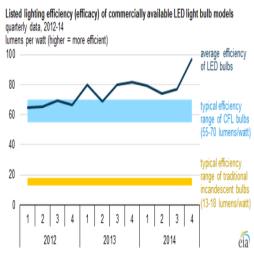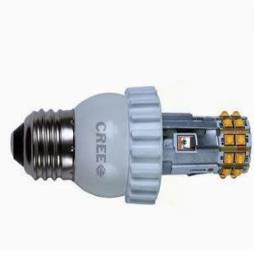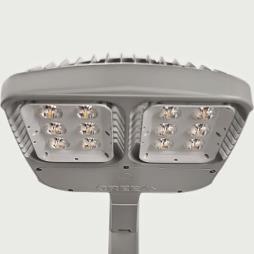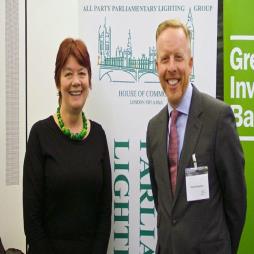US Energy Department: LEDs are 50% more efficient than two years ago
17-03-2015
Lux reports: The lighting industry can sometimes sound downright fickle when boasting about energy savings for LED lamps compared to incandescent models. One moment, it's 70 per cent. Another it's 80. Then it's 90, after which it might revert to 80, or 75. Who could blame the consumer for getting jaded?
But it's not always the whim of the vendor that keeps these numbers going round and round. Several factors justify the vicissitudes. The US Department of Energy has just reminded us of one of them: Lab developments keep making LED bulbs better. Thus, figures from two years ago could well have given way to improved performance.
According to the DOE's Energy Information Administration, new LED lamps ('bulbs' to some readers, including those in America) are generally 50 per cent more efficient today than they were in 2012.
The chart above shows that the average 'lumens per watt' (lm/W) for LEDs improved from around 65 in 2012 to around 99 today (several manufacturers now exceed 100 lm/W). That's more than a 50 per cent increase in efficiency, or 'efficacy' in lighting speak.
Incandescent bulbs, which haven't changed - and which the US essentially bans in wattages of 40 or higher -- weigh in at between 13-to-18 lm/W, for an average of 15 lm/W. Using those averages, back in 2012, an LED was around 77 per cent more efficient than an incandescent. Today, it's around 85 per cent more efficient, or 87 per cent if you use the lower 13 lm/W figure for incandescents.
LEDs have also now pulled ahead of compact fluorescent (CFL) lamps, their cheaper predecessor as energy savers. Two years ago the two technologies were neck-and-neck, but CFLs have remained in the 55-to-70 lm/W range, according to EIA.
Since LEDs are semiconductors - light-emitting diodes - they are subject to the advances routinely associated with the constant 'smaller, faster and better' progression of the electronic chip world, even if they aren't advancing at quite the pace of Moore's Law, in which computing power doubles every two years.
And it's not just LED efficiency that's getting better. Colour quality has also made strides, the EIA says in its press release.
Add to that a steady decline in prices, and EIA notes that, 'LED bulb shipments have increased from about nine million bulbs in 2011 to more than 45 million bulbs in 2013, reaching an estimated 2.3 per cent market share of general service lighting.'
It adds that shipments of CFLs -- which don't last nearly as long as an LED's reputed 20-plus years - have held steady at 'about 300 million annually since 2011, with an estimated market share of 15 per cent to 20 per cent.'
Of course not all LED lamps are created equal. Some won't last for decades, and some won't deliver the advertised energy savings - a point that the US government is promoting through a new Energy Star video campaign.
But the LED numbers are generally heading in the right direction and look set to keep getting better. Colour quality, for instance, should improve with the advent of violet LEDs, as Nobel Prize-winning blue LED inventor Shuji Nakamura notes.
Visit www.novelenergylighting.com for a full range of top quality LED lamps, tubes, and fittings for your lighting upgrade project






